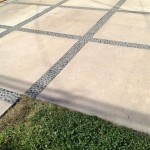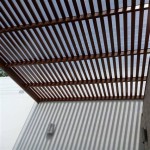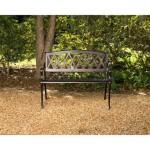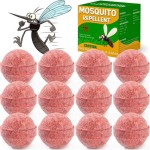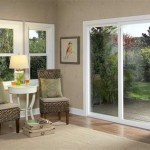Keeping Bugs Off Patio Furniture: A Guide to a Pest-Free Outdoor Space
Enjoying outdoor living spaces often involves contending with unwanted guests: insects. Patio furniture, if not properly maintained and protected, can become a haven for various bugs, disrupting relaxation and potentially leading to bites and other irritations. Understanding why bugs are attracted to patio furniture and implementing effective preventative measures is crucial for creating a comfortable and bug-free outdoor environment.
Several factors contribute to insect infestations on patio furniture. Food debris, spills, and moisture attract ants, flies, and cockroaches. Certain materials, like wood and wicker, provide ideal nesting sites for termites, carpenter ants, and spiders. Dark, sheltered areas under cushions and within furniture frames offer refuge for various insects, especially during the heat of the day. Uncleaned furniture also accumulates dust, pollen, and mold, further contributing to a welcoming environment for bugs.
Effective bug control involves a multi-pronged approach, including regular cleaning, preventative treatments, and strategic landscaping. By addressing the factors that attract insects and implementing these strategies, individuals can significantly reduce bug populations around their patio furniture and create a more enjoyable outdoor living space.
The type of patio furniture also impacts its susceptibility to bugs. For instance, wooden furniture can be vulnerable to wood-boring insects, requiring specific protective measures. Fabric cushions can harbor dust mites and other allergens, necessitating frequent cleaning. Metal furniture is generally less attractive to insects, but crevices and joints can still provide hiding places. Understanding the material composition of one's patio furniture is essential for selecting appropriate pest control methods.
Regular Cleaning and Maintenance
Consistent cleaning is the foundation of bug prevention for patio furniture. Regular cleaning removes food particles, spills, and debris that attract insects. The frequency of cleaning depends on several factors, including the usage of the patio furniture, the surrounding environment, and the type of furniture material.
For everyday cleaning, a simple wipe-down with a damp cloth can remove surface dirt and spills. For more thorough cleaning, a mild soap solution can be used. It is crucial to ensure that the soap is non-abrasive to avoid damaging the furniture material. After washing, the furniture should be thoroughly rinsed with clean water and allowed to dry completely. Moisture trapped within the furniture can encourage mold growth, which further attracts bugs.
Cushions and pillows should be regularly vacuumed to remove dust mites, pollen, and other allergens. Removable cushion covers should be washed according to the manufacturer's instructions. If the cushions are not removable, they can be spot-cleaned with a fabric cleaner. It is essential to ensure that the cushions are completely dry before being placed back on the furniture. Storing cushions indoors during periods of non-use can also help to prevent bug infestations.
Wooden furniture requires specific maintenance to prevent wood-boring insects. Applying a sealant or varnish can help to protect the wood from moisture and insect damage. Regularly inspecting wooden furniture for signs of insect infestation, such as small holes or sawdust, is also important. If signs of infestation are detected, the furniture should be treated with an appropriate insecticide or professional pest control services should be considered.
Wicker furniture, with its intricate weave, can be particularly challenging to clean. A brush with soft bristles can be used to remove dust and debris from the crevices. A vacuum cleaner with a hose attachment can also be used to clean hard-to-reach areas. Avoid using excessive water when cleaning wicker furniture, as it can damage the material. A mild soap solution can be used for more thorough cleaning, but the furniture should be thoroughly dried afterward.
Preventative Treatments and Repellents
In addition to regular cleaning, preventative treatments can help to deter bugs from patio furniture. Various options are available, including natural repellents, insecticides, and barrier methods. The choice of treatment depends on the type of bugs present, the type of furniture material, and personal preferences.
Natural repellents, such as essential oils, can be an effective and environmentally friendly option. Citronella, eucalyptus, peppermint, and lavender oils are known for their insect-repelling properties. These oils can be diluted with water and sprayed onto the furniture. However, it is important to note that natural repellents need to be reapplied frequently, especially after rain.
Insecticides can provide more long-lasting protection against bugs. However, it is crucial to use insecticides carefully and to follow the manufacturer's instructions. Choose insecticides that are specifically designed for outdoor use and that are safe for use around pets and children. Avoid spraying insecticides directly onto cushions or other fabrics, as they can stain or damage the material.
Barrier methods can also be used to prevent bugs from accessing patio furniture. Placing sticky traps around the perimeter of the patio can help to capture crawling insects. Using mosquito netting around the patio can provide a physical barrier against flying insects. Sealing cracks and crevices in the patio surface can also help to prevent bugs from entering the area.
For wooden furniture, applying a borate-based wood preservative can help to protect against wood-boring insects. Borates are a naturally occurring mineral that is toxic to insects but relatively harmless to humans and pets. The preservative should be applied according to the manufacturer's instructions, and the furniture should be regularly inspected for signs of infestation.
Strategic Landscaping and Environmental Control
The surrounding landscape can significantly impact the bug population around patio furniture. By making strategic landscaping choices, individuals can create an environment that is less attractive to insects. This involves managing standing water, controlling vegetation, and selecting insect-repelling plants.
Standing water is a breeding ground for mosquitoes. Eliminating sources of standing water around the patio, such as bird baths, flower pots, and clogged gutters, can significantly reduce the mosquito population. Cleaning gutters regularly is essential to ensure proper drainage. Emptying and refilling bird baths frequently can also help. If standing water cannot be eliminated, consider using mosquito dunks, which contain a bacteria that kills mosquito larvae.
Controlling vegetation around the patio can also help to reduce bug populations. Keeping grass trimmed and bushes pruned can eliminate hiding places for insects. Removing weeds and decaying plant matter can also help. Consider creating a barrier between the patio and the surrounding vegetation by using gravel or mulch. This will help to prevent insects from crawling onto the patio furniture.
Certain plants have natural insect-repelling properties. Planting these plants around the patio can help to deter bugs. Citronella grass, lavender, rosemary, and marigolds are all known for their insect-repelling properties. These plants can be planted in pots or directly in the ground. The scent of these plants helps to mask the odors that attract insects.
Maintaining a clean and tidy environment around the patio is also important. Regularly sweeping the patio to remove food crumbs and debris can help to prevent attracting ants and other insects. Storing garbage cans away from the patio can also help. Covering food and drinks when not in use can prevent attracting flies and other insects.
Outdoor lighting can also attract bugs. Consider using yellow or sodium vapor lights, which are less attractive to insects than traditional incandescent lights. Positioning lights away from the patio furniture can also help to reduce the bug population in the area. Using motion-activated lights can also help to conserve energy and reduce bug attraction.
By implementing these cleaning, preventative, and landscaping strategies, individuals can significantly reduce the bug population around their patio furniture and create a more enjoyable outdoor living space. Consistent effort is key to maintaining a bug-free environment throughout the season.

How To Keep Bugs Off Your Patio Turf Factory

Some Tips For Answering How To Keep Bugs Off Patio Furniture Q

How To Keep Bugs Off Your Patio Furniture Blue Lagoon Spas

Some Tips For Answering How To Keep Bugs Off Patio Furniture Q

Some Tips For Answering How To Keep Bugs Off Patio Furniture Q

5 Tips To Keep Bugs Away From Your Patio Outdoormarketplace

Some Tips For Answering How To Keep Bugs Off Patio Furniture Q

13 Simple Ways To Keep Spiders Away From Your Patio Wikihow

Some Tips For Answering How To Keep Bugs Off Patio Furniture Q

How To Keep Bugs Off Your Patio Turf Factory



